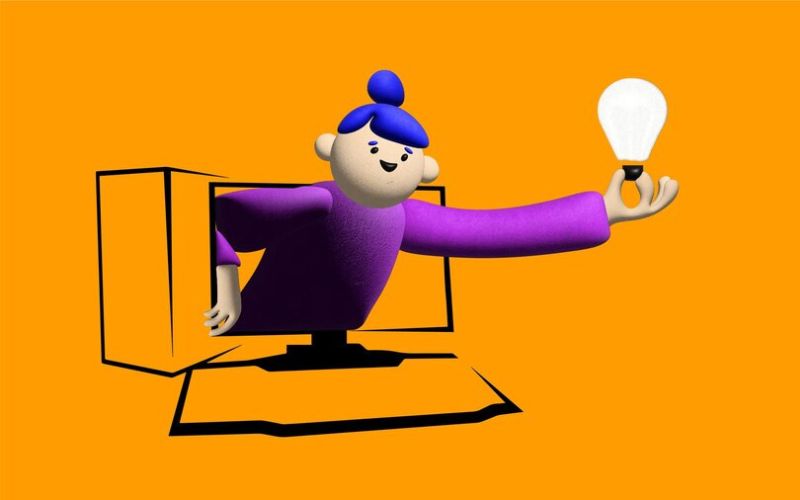The influence of animation now extends beyond traditional children’s content. From thought-provoking adult animations like BoJack Horseman to visually ground-breaking films such as Toy Story and Frozen, animation transcends genres and appeals to diverse audiences.
These days more and more animation enthusiasts are captivated by the magic of animation and an animation course is the perfect fit for them. The animation course acts as a platform for students to develop their creative ideas and refine their animation skills.
In this blog, we will look at a guide to Tips to plan an animation project and how animation courses can help you in this.
Topics We Are Going To Cover
# What Kind Of Projects Do Animators Work On?
# Tips to Plan an Animation Project Successfully
# How Animation Courses Enhance Successful Execution and Completion of Animation Projects?
What Kind Of Projects Do Animators Work On?

Animation is a fascinating and versatile art form that allows creators to bring static images to life through motion. As animators hone their skills, they find themselves collaborating on a wide range of projects across different industries and mediums. Here are various types of projects animators often work on and the impact they have on these industries.
- Animated Films: Animated films are a cornerstone of the animation industry, and animators play a crucial role in their creation. Working closely with directors and storyboard artists, animators bring characters, environments, and objects to life through their meticulous attention to detail. Frame by frame, they ensure that the storytelling is visually compelling and emotionally engaging, captivating audiences worldwide.
- TV Series and Web Series: In the age of streaming platforms, TV series and web series have gained significant popularity. Animators contribute their skills to these episodic productions, following established style guides while maintaining consistency throughout multiple episodes. Their ability to maintain character design coherence and animate complex actions helps deliver seamless and captivating storytelling.
- Video Games: The gaming industry relies heavily on animators to create immersive and interactive experiences. Animators breathe life into characters, creatures, and environments, animating their movements and actions within the game’s framework. By working closely with game designers and developers, they ensure that animations enhance gameplay and contribute to player engagement.
- Commercials and Advertisements: Animators also make their mark in the world of advertising by creating animated commercials and advertisements. Whether it’s a 2D or 3D animation, they use their creativity and technical expertise to craft visuals that effectively convey brand messages and captivate their target audience. Animators assist marketers in connecting with consumers in a visually appealing and engaging manner.
- Educational and Training Materials: Animators have a significant impact on the creation of educational and training materials, such as e-learning modules, interactive tutorials, and instructional videos. They simplify complex concepts, illustrate processes, and engage learners through their animations. Collaborating with subject matter experts, animators ensure that visual representations are accurate, accessible, and captivating for effective learning experiences.
- Motion Graphics and Visual Effects: Animators also lend their talents to projects that require motion graphics and visual effects, including title sequences for films and TV shows, logo animations, and special effects for videos. They employ their skills in motion design, compositing, and visual effects to add dynamic and captivating elements that enhance the overall visual aesthetics.
Tips to Plan an Animation Project Successfully

Planning is a crucial aspect of any animation project. A well-thought-out plan lays the foundation for successful execution, ensuring that the project runs smoothly and achieves its intended goals. Whether you are creating a short film, a commercial, or an educational animation, following these tips will help you plan your animation project effectively.
- Define the Project Scope: Start by clearly defining the scope of your animation project. Identify the purpose, target audience, and desired outcome of the animation. Determine the timeline, budget, and available resources. Having a comprehensive understanding of the project scope will guide your planning and decision-making process throughout the project.
- Develop a Concept and Storyline: Crafting a captivating concept and storyline is essential for engaging your audience. Brainstorm ideas, develop characters, and create a compelling narrative. Make sure the concept aligns with the project’s goals and resonates with your target audience. Take time to refine your storyline, focusing on character development, plot progression, and engaging visuals.
- Create a Detailed Production Schedule: Develop a production schedule that outlines the tasks, their dependencies, and the timeline for each phase of the project. Break down the animation process into manageable steps, such as scriptwriting, storyboarding, asset creation, animation, sound design, and post-production. Assign responsibilities and set realistic deadlines to ensure efficient workflow and timely completion.
- Plan and Organize the Visual Style: Determine the visual style that best suits your project, whether it’s 2D, 3D, stop motion, or a combination of techniques. Research and gather visual references to inspire and guide your art direction. Decide on color palettes, lighting techniques, and design elements that convey the desired mood and aesthetic.
- Allocate Resources Wisely: Evaluate the resources required for your animation project, including equipment, software, or additional talent. Ensure you have access to the necessary hardware and software tools to execute the animation effectively. Consider outsourcing certain tasks or collaborating with professionals if needed.
- Consider Sound and Music: Sound design and music greatly enhance the impact of an animation project. Plan for appropriate sound effects, voiceovers, and music to create an immersive experience. If possible, work with a sound designer or composer to create original music and soundscapes that complement the animation’s mood and narrative.
- Test and Iterate: Throughout the planning process, it is important to test and iterate on your work. Seek feedback from peers, mentors, or even potential viewers to incorporate constructive criticism and improve your project. Regularly reassess and adjust your plan as needed to ensure the project stays on track and meets your artistic and technical objectives.
However, by combining your animation training with effective planning, you can ensure the success of your animation project.
How Animation Courses Enhance Successful Execution and Completion of Animation Projects?

Animation has evolved into a captivating and dynamic field, permeating various aspects of our modern world. As the demand for skilled animators continues to rise, animation courses have proliferated, offering aspiring animators a pathway towards success. By enrolling in these courses, students gain valuable skills and knowledge that play a pivotal role in executing and completing animation projects successfully.
- Confidence and Soft Skills Development: Animation course focus on developing students’ confidence and enhancing their soft skills. These courses teach the importance of effective communication, teamwork, and leadership, all essential qualities for executing animation projects successfully. Through collaborative projects and real-world scenarios, students learn to navigate challenges and develop the confidence needed to bring their creative vision to life.
- Skill Training in Diverse Techniques: Animation courses provide comprehensive training in various animation techniques, equipping students with a well-rounded skillset. Students receive hands-on experience in 2D and 3D animation, pixel art, motion graphics, stop motion, and more. This exposure enables them to apply the appropriate techniques, enhancing their ability to execute animation projects successfully.
- Technology and Software Knowledge: Animation courses ensure students are well-versed in the latest technology and industry-standard software. Through practical exercises and tutorials, students familiarize themselves with software such as Adobe After Effects, Autodesk, and Maya 3D. This technical knowledge empowers students to leverage the full potential of these tools, enabling them to execute animation projects efficiently and with exceptional quality.
- Exposure to Industry Professionals: One of the significant advantages of animation courses is the opportunity to learn from industry professionals. Through workshops, seminars, and guest lectures, students gain insights into the technicalities and trends within the animation industry. Interacting with professionals allows students to understand real-world project execution and receive valuable feedback that enhances their proficiency in executing animation projects.
- Networking Opportunities: Animation courses provide students with a platform to connect and network with other aspiring animators and established professionals in the industry. Attending industry events, forums, and webinars can expose students to job opportunities, industry trends, and collaborations. Networking opens doors for potential partnerships and collaborations, leading to exciting new animation projects and further skill development.
Which Are The Top Animation Classes Near You?
If you are looking for top animation classes near you, then we are here to help you with this by recommending George Animatrix, one of the top animation institutes. We offer a range of animation courses designed to meet the diverse needs of students. Whether you are interested in 2D or 3D animation, character design, or visual effects, we have a course that will help you achieve your goals.
Recommended Post: A Comprehensive Guide Of Animation Course Curriculum
Conclusion
In conclusion, animation courses play a critical role in the successful execution and completion of animation projects. These courses offer aspiring animators the opportunity to develop their skills, gain industry knowledge, and build a strong foundation for their careers. By enrolling in animation courses, students not only enhance their technical abilities but also develop essential soft skills such as effective communication, teamwork, and leadership. These skills are vital for collaborating with others and navigating the challenges that often arise during animation projects. Animation courses also provide students with training in diverse animation techniques, equipping them with a well-rounded skillset. From 2D and 3D animation to motion graphics and stop motion, students gain hands-on experience that allows them to bring their creative ideas to life using the most suitable techniques.



